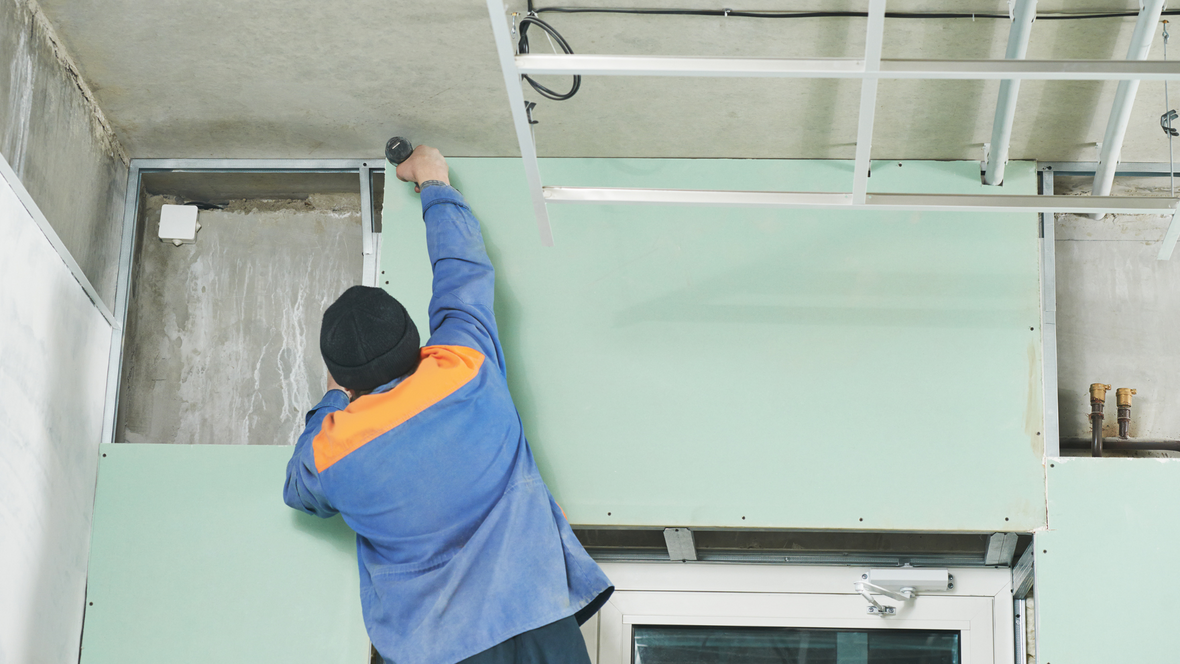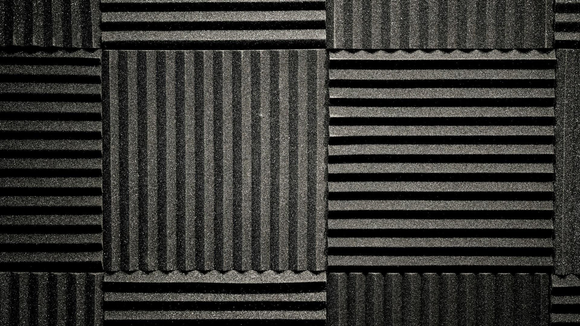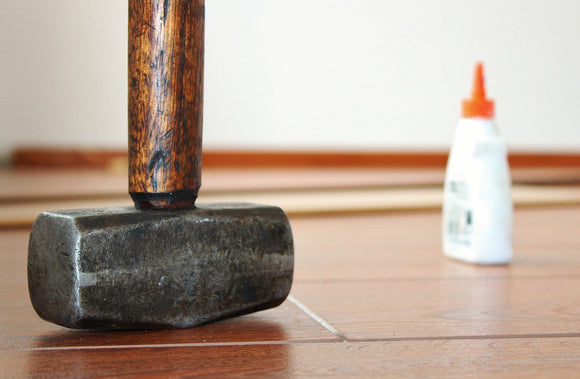
What Do You Need For Fixing Plasterboard | A Complete Guide
Tobias Johnson-Hulse
If you’ve got plasterboard on your walls or ceilings, you know it’s a fantastic material, lightweight, easy to work with, and widely used in homes everywhere. It’s a solid alternative to wet plaster, giving you smooth surfaces ready for paint or wallpaper, though. Cracks, holes, or water damage can show up over time, whether from an accidental bump or a leaky pipe. With the right tools, materials, and a little know-how, you can restore your plasterboard to its former glory. This guide arms you with everything you need to achieve a professional finish.
Why the Right Tools Matter
Before we jump into the nitty-gritty straight away, let’s talk about why having the right tools matters so much. Fixing plasterboard isn’t just about slapping some filler on and calling it a day. The tools you use directly affect how easy the job is and how good it looks when you’re done. A sharp utility knife, for instance, makes clean cuts, whereas a flimsy one leaves you with ragged edges that are a pain to fix. Quality tools save you time, frustration, and even money in the long run, especially if you’re planning a makeover or more DIY projects. Trust me, investing in the good stuff pays off with a finish you’ll be proud of.
Key Tools for Fixing Plasterboard
So, what do you actually need in your toolbox? Here’s the lineup of essentials for plasterboard fixings, each with a job to do.
Utility Knife
First up, a utility knife. This little powerhouse is great for cutting plasterboard cleanly. Whether you’re trimming a new piece or tidying up a damaged spot, a sharp blade gets it done without tearing the surface. Keep it fresh and swap out dull blades so you’re not fighting the material.
Plasterboard Saw
For bigger jobs, like cutting out a damaged section, you’ll want a plasterboard saw. It’s built to slice through the gypsum core and paper facing smoothly, without kicking up a dust storm. If you’re dealing with a large hole, this tool makes quick work of it.
Taping Knife or Putty Knife
A flexible 6-inch taping knife is your best friend for spreading joint compound. Use a 12-inch blade for feathering seams invisibly. For small holes, a putty knife works, but keep it clean, dried compound ruins the edge.
Sandpaper or Sanding Block
Sanding is where repairs go from “good” to “undetectable.” Use 120–150 grit sandpaper and a sanding block to avoid dips. Always sand in circular motions, and never skip the dust mask—plaster particles are brutal on the lungs.
Drill & Screws
To secure plasterboard to stud walls or a timber frame, you’ll need a drill and screws. Plasterboard screws are designed to hold firm without cracking the board. They’re a must for plasterboard fixings, keeping everything locked in place when you’re patching or replacing sections.
Measuring Tape & Pencil
Accuracy is important in every repair project. A measuring tape and pencil allow you to mark precise cut lines and confirm dimensions for replacement pieces. Before you cut any new material it is vital to double check your measurements so that your repair fits perfectly.
Essential Materials for Repair
- Joint Compound (Filler)
- Plasterboard Tape
- New Plasterboard (if replacing sections)
- Primer & Paint
- Plasterboard Fixing Foam or Adhesive
Step-by-Step Guide to Fixing Plasterboard

Preparing the Area
Start by clearing the work space from any obstacles and protect nearby furniture from dust or splatters. Remove any loose material from the damaged area with a gentle touch and wipe away debris so that the surface is clean and ready for work. This initial step is critical because it sets the stage for a repair that is both effective and long lasting. When you take a few extra moments to ensure the area is prepared you reduce the chance of further issues during the repair.
Fixing Small Cracks and Holes
Small imperfections such as minor cracks or holes are often less daunting than larger repairs. Begin by using a utility knife to clean the edges of the damaged area. This makes it easier for the joint compound to adhere to the surface.
Once the area is neat apply a thin layer of joint compound carefully using your taping knife. Work in gentle, even strokes so that the compound fills the gap and creates a smooth surface. Overlapping the strokes slightly helps build a uniform finish.
Allow the compound to dry completely before moving on to sanding. It is best to work gradually to ensure that each layer is fully dry to maintain the integrity of your repair.
Repairing Large Holes or Replacing Sections
When the damage extends beyond a small area you may need to cut out the damaged section and replace it with new plasterboard. In this case, you may need to use your measuring tape and pencil to mark a precise line around the damaged area.
Carefully remove the damaged piece with your utility knife or plasterboard saw. It is important to maintain clean edges for a seamless fit once the area is clear cut a replacement piece to match the dimensions of the removed section.
Attach the new piece securely with screws using your drill and make sure it aligns well with the existing board. Applying joint compounds around the seams reinforces the bond and smoothes the transition between the old and new surfaces. This approach ensures that the repair is strong and does not draw attention away from the rest of the wall or ceiling.
Oh, and if you’re glueing plasterboard instead like glueing plasterboard to brick, construction adhesive or D4 wood adhesive works well. Some folks even use plasterboard fixing foam for extra hold, especially on a brick wall.
Finishing Touches
After the structural repair is complete it is time to focus on the finishing touches. Sand the repaired area gently with your sanding block until it is even and ready to accept a primer. This step is essential as it removes any excess compound and ensures a seamless transition with the surrounding area. Next, apply a coat of primer to seal the surface and prepare it for painting. A final layer of paint not only enhances the appearance but also protects the repair against moisture and everyday wear.
Common Mistakes to Avoid
● While the plasterboard repair process may seem straightforward there are a few pitfalls that you can avoid to ensure a lasting result. One common error is using too much joint compound at once. This can lead to uneven drying and an unsatisfactory finish.
● Failing to allow each layer of compound to dry fully can compromise the strength of the plasterboard repair. In addition neglecting to properly sand the surface may leave a rough finish that is noticeable after painting.
● Another mistake to be aware of is not addressing the root cause of the damage. For instance if the issue stems from water damage it is important to resolve the underlying moisture problem before fixing the plasterboard.
● Incomplete removal of loose or damaged material can also create future issues during the repair. Patience and careful attention to detail go a long way in preventing these common mistakes.
Conclusion: From Eyesore to Pristine, Your Makeover Moment
Fixing plasterboard is a practical task that becomes much more manageable when you understand each step and use the right tools and materials. As with any DIY or home improvement project, the preparation is the first step in the undertaking, so make sure to clean the workspace. Then, move onto the task at hand, whether it be sanding, patching, striking, or painting, before finally finishing with paint. By taking the time to work methodically and following the guidelines presented you can achieve a plasterboard repair that is both secure and visually pleasing.


